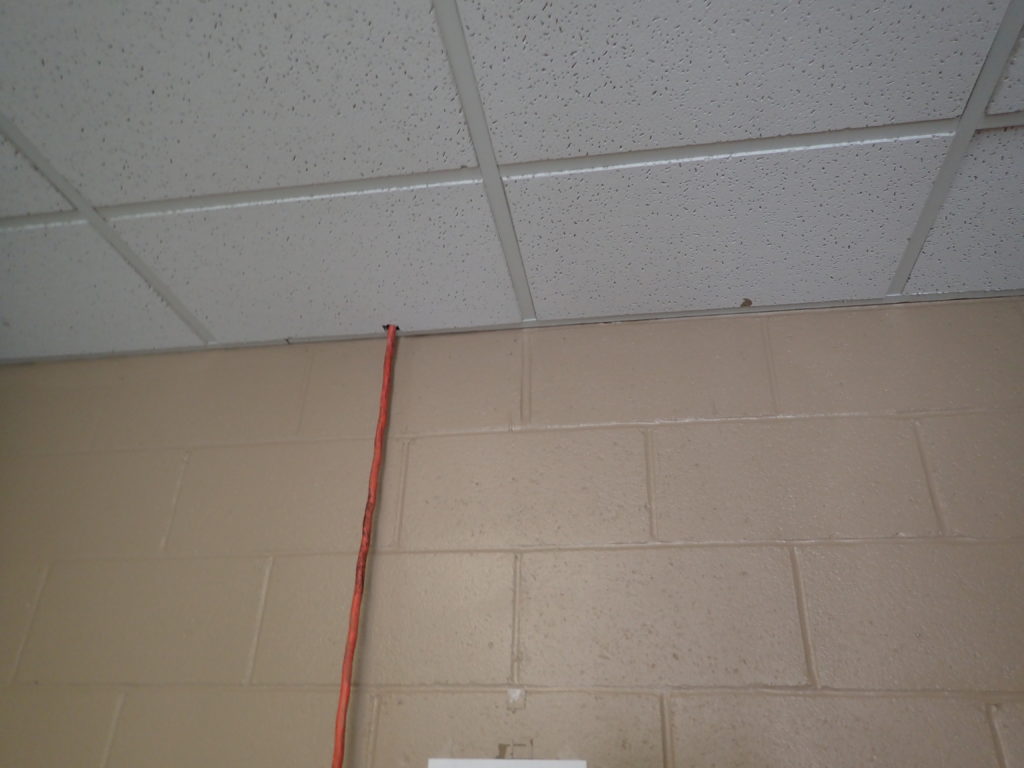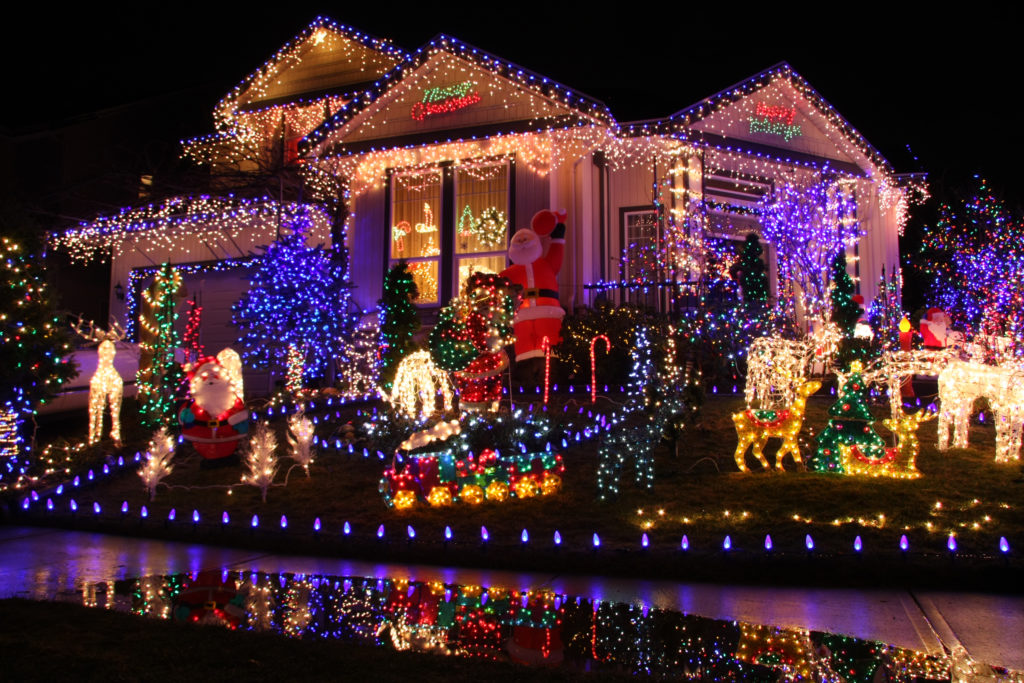Temporary wiring is just that….temporary, and is typically used for repair and maintenance projects. In this blog I am going to discuss guidance offered by Article 590 of the National Electric Code (NEC), as well as some points to consider when using temporary wiring, including extension cords and holiday lighting.
Before each use, extension cords need to be inspected for visual damage. Cords with cuts or splits to the insulation need to be discarded. Cords with damage to the connectors, including those that feel loose when connected, need to be taken out of service. Failure to properly select and use extension cords can have a catastrophic result. Loose connections can cause overheating which in the right conditions, and in the presence of ignitable materials, can result in a fire.
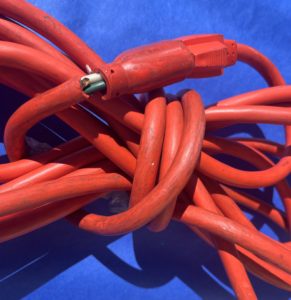
FIGURE 1 – Damaged extension cord
While it seems simple to just grab an old extension cord lying in the garage, the choice is important. The size of the conductors is a factor of the cord length and the connected load. Depending on the load, too small of a conductor or too long of a cord will cause a voltage drop at the point of use. A large enough voltage drop may damage the connected device such as a saw being used for repairs.
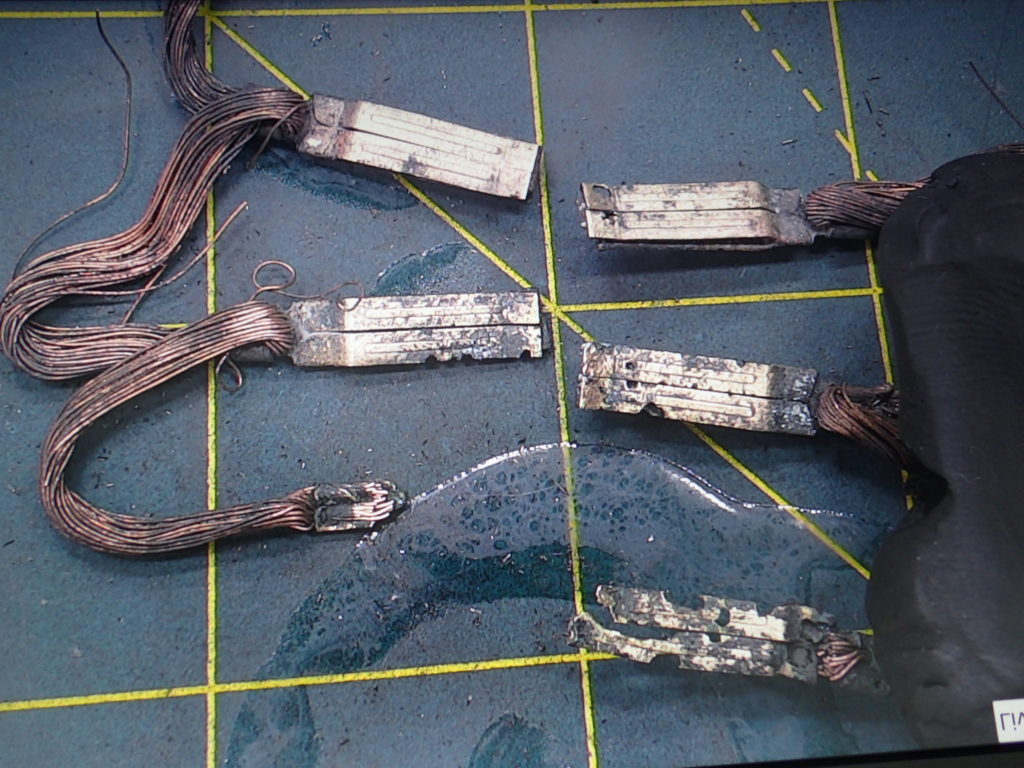
FIGURE 2 – View of damaged extension cord sockets that resulted in a fire from a loose connection.
Often an outlet is needed in a place where one has not been installed. The temptation to use an extension cord instead of having a permanent outlet installed is a common occurrence. The routing of extension cords through ceilings and over and through walls happens out of convenience and is in direct violation of the wiring methods prescribed by code. The improper installation increases the risk of fires occurring.
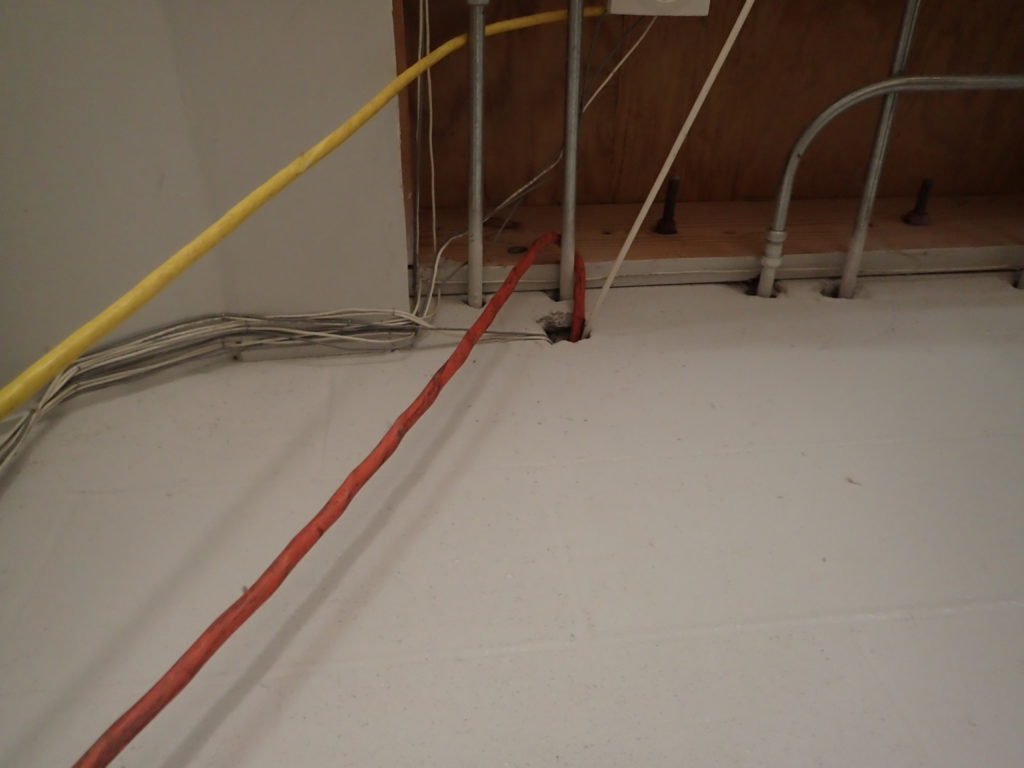
FIGURES 3 & 4 – Views of extension cords improperly running through ceiling and walls in a commercial installation.
Holiday decorations are a special application of temporary wiring. While all temporary wiring should be removed as soon as possible, NEC Article 590.3(B) specifies that wiring for holiday displays is limited to 90 days. The lighter gauge wire, exposure to weather and the inexpensive construction methods of light strings are all factors in this time limit.
Temporary wiring is a serious topic. The bottom line, select properly sized extension cords and use them for truly temporary tasks such as maintenance and repairs. Store the cords properly and inspect them for damage before every use. And always plug extension cords into GFCI receptacles.
Tom Kelly, PE, MSEE, CFEI, CESCP, has a Bachelor of Science in Electrical Engineering and a Master of Science in Electrical Engineering from Florida Atlantic University, Boca Raton, Florida. He also has a Master of Business Administration with emphasis in strategic leadership from Winthrop University, Rock Hill, South Carolina. Tom’s 30 plus year career in electrical engineering includes forensic engineering investigations involving industrial electrical accidents, electrical equipment failure analysis, control system failures, robotics and automation components, and scope of damage assessments. He has conducted investigations for fires, arc flash incidents, electrocution and electric shock accidents and lightning strike evaluations.



